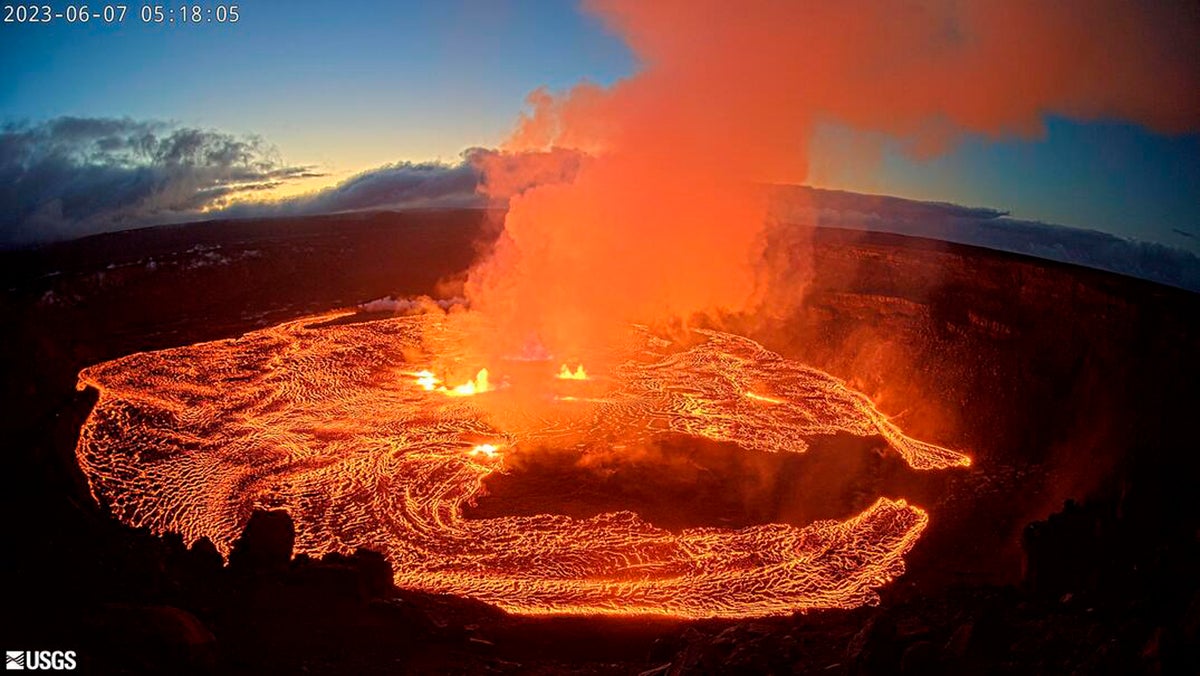
Kilauea, the volcano on Hawaii's Big Island, erupted early Wednesday morning.
The US Geological Survey captured the drama of the eruption at the volcano's Halema'uma'u crater, where lava leaped into the air from the maw of the mountain.
The agency said the eruption poses no risk to the public, and noted that lava has not been ejected further than the crater's floor. It did raise the volcano alert warning to red, noting that ash resulting from the disruption could pose a risk to aviators.
“At approximately 4:44 a.m. HST on June 7, 2023, the (US Geological Survey’s) Hawaiian Volcano Observatory detected glow in Kilauea summit webcam images indicating that an eruption has commenced within Halemaʻumaʻu crater in Kilauea’s summit caldera, within Hawai’i Volcanoes National Park,” the Hawaiian Volcano Observatory wrote in a statement on Wednesday.
The observatory called the first stages of the eruption "dynamic" and described the activity on the volcano.
Webcam imagery shows fissures at the base of Halemaʻumaʻu crater generating lava flows on the surface of the crater floor. The activity is confined to Halemaʻumaʻu and the hazards will be reassessed as the eruption progresses,” the agency said.
Scientists studying the volcano said activity at Kilauea began on Tuesday evening, increasing ground tremors and deformation near the mountain's summit.
David Phillips, a deputy scientist leading the team at the HVO said last night's activity made researchers fairly confident an eruption would occur today, according to Hawaii News Now.
“Every eruption’s a little different,” he said. “For the one that happened this morning, we had 65 minutes of precursory activity that we were pretty confident would lead to an eruption in this case.”
He said activity levels at the mountain had increased in recent weeks, catching their attention and prompting them to adjust the volcano alert level.
“For the past couple of weeks, things have been elevated, but it wasn’t quite at the level where we saw direct movement of magma towards the surface and we saw that this morning, about an hour before the eruption,” Mr Phillips said.
The volcano's last eruption began on 5 January and lasted 61 days.







